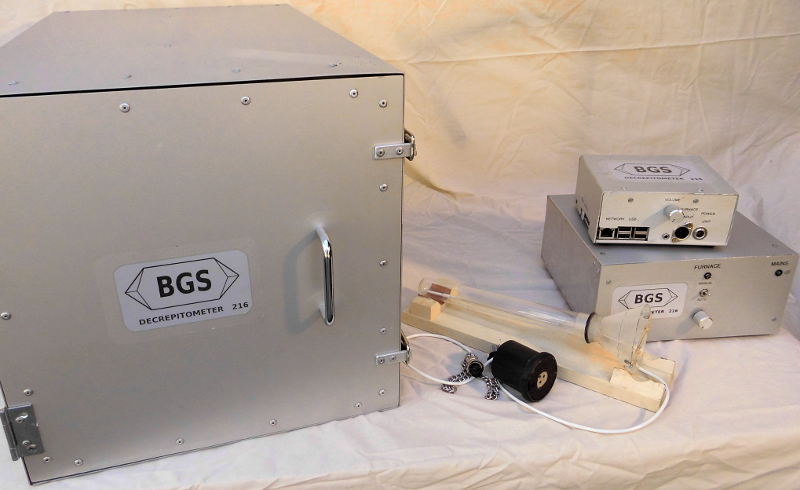The
use of fluid inclusion decrepitometry to distinguish
mineralised and barren quartz veins in the Aberfoyle
tin-tungsten mine area, Tasmania. (1983)
(abstract)
(full
paper, pdf)
An instrument for fluid inclusion decrepitometry and
examples of its application. (1988) (abstract)
(full
paper, pdf)
The recognition of variations in sample suites using
fluid inclusion decrepitation - applications in mineral
exploration (1988) (abstract)
(full paper, pdf)
Decrepitation studies in gold exploration. A case history
from the Cotan prospect, N.T., Aust. (1991) (abstract)
(full paper, pdf)
Comparison
of decrepitation, microthermometric and compositional
characteristics of fluid inclusions in barren and
auriferous mesothermal quartz veins of the Cowra Creek
gold district, New South Wales, Australia By: J.A.
Mavrogenes et. al., (1995) (abstract)
Acoustic Decrepitation as a means of rapidly determining
CO2 (and other gas) contents in fluid
inclusions and its use in exploration, with examples from
gold mines in the Shandong and Hebei provinces,
China (2007) (full
paper, html)
A discussion to
point out errors in H2 analyses of fluid
inclusion volatiles by mass spectrometry. (2013)
Fluid types and
their genetic meaning for the BIF-hosted iron ores, Krivoy
Rog, Ukraine. By Marta Sośnicka et.al.
(2015) Extract (PDF file,
3.5 Mbyte) here
Mineral
geochemistry of the Sangan skarn deposit, NE Iran:
Implication for the evolution of hydrothermal fluid.
By Fatemeh Sepidbar et.al. (2017) Extract (PDF file, 5.8
Mbyte)
 Applied Mineral Exploration
Applied Mineral Exploration Discussion and research relevant to mineral
exploration.
Discussion and research relevant to mineral
exploration. 
